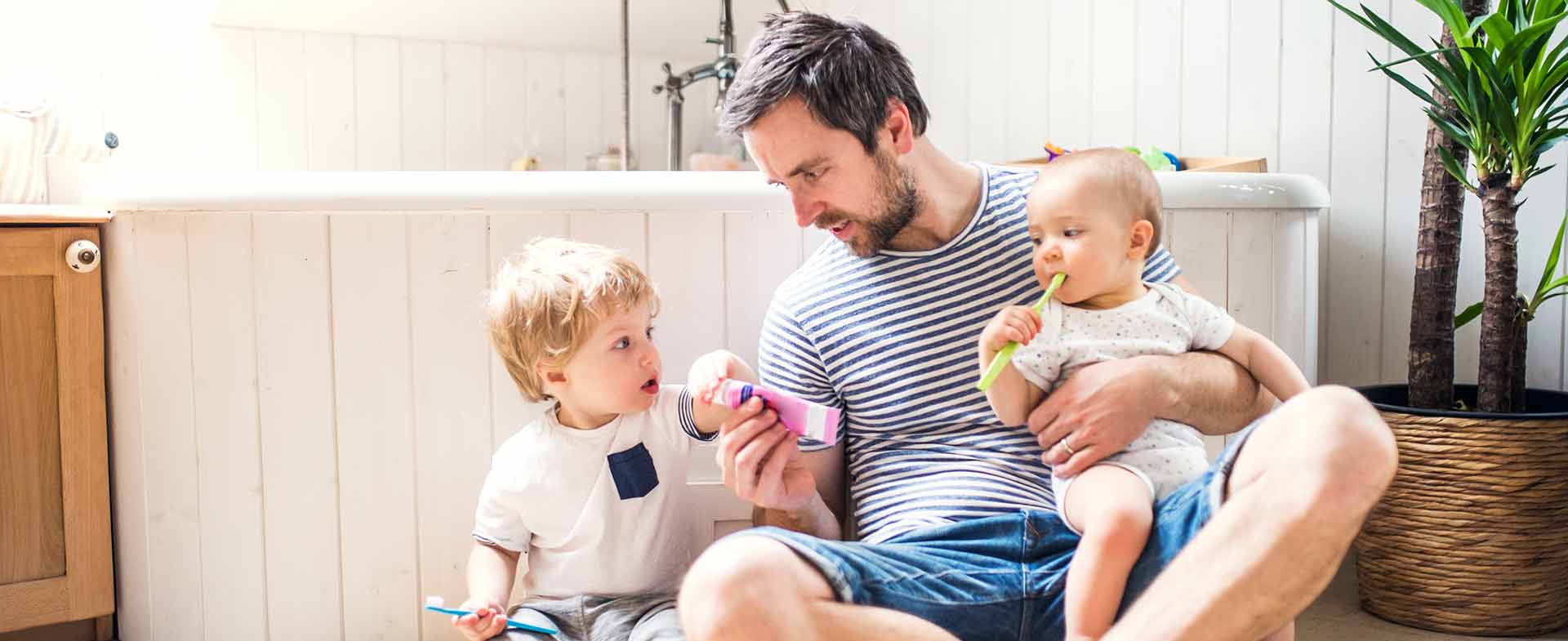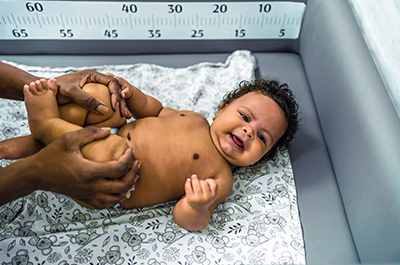If your baby drools frequently, puts nearly everything in his mouth and seems a bit fussier than usual, it's a safe bet that new teeth are about to break through. Most kids get their first tooth between 6 months and 1 year of age.
Your job: Establish healthy oral care habits even before that first tooth erupts. Healthy oral hygiene has a strong link to a child's overall health and well-being, and it begins at a young age.
Gum And Tooth Care For Infants
Children as young as 1 can develop cavities. It happens when bacteria get trapped in the mouth and feed on sugar, creating an acid that dissolves tooth enamel. Unfortunately, oral bacteria not only affect your child's mouth and teeth, but can also get into the bloodstream and cause disease.
Even bacteria in your mouth can increase the amount of cavity-causing bacteria in your baby's mouth, particularly if you share food and kisses. So it makes sense to adopt good oral hygiene habits of your own while also attending to your baby's ever-changing mouth.
A few solid habits to cultivate at this age:
- Avoid letting your baby take a bottle or sippy cup to bed.
- Make sure a soft-bristled toothbrush or clean finger is the last thing to touch your baby's mouth before bedtime and naps.
- Brush your baby's teeth with water or toothpaste the size of a grain of rice after feedings, or at least twice a day.
- Take your child to a dentist by their first birthday or within six months of getting their first tooth.
Toothbrushing For Toddlers
It can take some time for children to develop the fine motor skills needed to brush their teeth. Until then, you'll need to take charge. It's helpful to break the process down and explain what you're doing step by step.
- Allow them to get comfortable with the toothbrush. Let them hold it and see how the bristles work.
- Apply a small amount of fluoridated toothpaste to the brush (about the size of a grain of rice for babies under age 2; pea-sized for kids ages 2 to 5).
- Brush your teeth in front of your child and model what it looks like to get your teeth clean.
- Allow your child to sit up and lean his head back onto your chest (you can also sit on the floor and have them lay in your lap looking up at you). That way, you can access the back teeth. Do a detailed clean, brushing in a circular motion. Focus first on the gum line and then brush the top and middle of each tooth.
- Make sure to brush your child's teeth twice each day and rinse out the excess toothpaste for them until they learn to spit it out on their own.
Toothbrushing For Preschoolers
Once kids reach preschool age, they're usually able to brush and rinse on their own. It's a good idea for a parent to do a second cleaning to make sure the child covered the gumline and clean any hard-to-reach areas.
If your child is able to spit, you can begin using a pea-sized amount of paste for each cleaning. And if your child's teeth are touching each other, it's time to break out the floss. Flossing for preschoolers is still the parents' job, but kids can get the hang of it pretty quickly as they get older.
Toothbrushing For Big Kids
Most kids are able to brush their teeth without supervision by age 6 or 7. But it's important to continue monitoring how much toothpaste they're using. Getting too much fluoride can permanently stain teeth.
Older kids may still need help flossing well. They may also benefit from using mouthwash. That's a personal decision, but I find that some kids like to swish the solution in their mouth and spit it into the sink.
Older kids should see their dentist twice each year, and whenever problems arise. Your pediatric dentist may also recommend visiting an orthodontist for special appliances like retainers and expanders. These devices can create more space in your child's mouth and improve their breathing and sleeping.
Oral Hygiene Tips For All Kids
No matter how old (or young) your child is, it's important to maintain healthy oral hygiene habits. You'll get more buy-in from your kids if you make it enjoyable. To ensure your child is taking good care of their teeth and mouth, try these tips:
- Let them choose their toothbrush. Whether your child likes superheroes or Disney characters, chances are good you can find a toothbrush that makes them want to brush. For younger kids, choose brushes with a large base for easier maneuvering.
- Choose soft bristles. Most kids' toothbrushes naturally come equipped with soft bristles, but it's always a good idea to check the label.
- Select a toothpaste they like, as long as it has fluoride. If your kid doesn't like mint (many kids think it's too spicy), opt for a fruit-flavored paste.
- Make it easy to floss. A lot of kids struggle to work with floss. Consider letting your child floss with easy-to-grip sticks or do the floss work for them until they reach age 7 or 8.
- Replace your child's toothbrush every three or four months. Bristles get frayed over time. They can even harden and irritate your child's gum line. To ensure your kid's smile remains in top shape, make sure to swap out their toothbrush at regular intervals.
- Avoid sticky foods. The sugars in sticky foods can linger on the teeth and contribute to decay. So make sure your child steers clear of hard candies, caramels, soft chews and other foods that are likely to get stuck on teeth. If your child does eat gummy or sticky foods, make sure they brush their teeth immediately after they're done.
Subscribe today to receive weekly emails of our latest tips.
To find a pediatrician at Henry Ford, visit henryford.com or call 1-800-436-7936.
Stacy Leatherwood Cannon, M.D., is a board-certified pediatrician and the physician champion for childhood wellness. She sees patients at Henry Ford Medical Centers in midtown Detroit and Sterling Heights. Learn more about Dr. Leatherwood Cannon.



